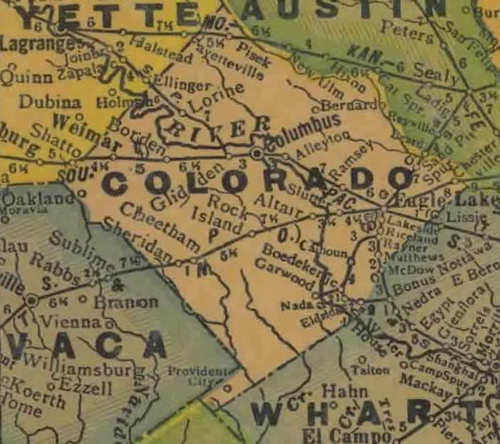Rock Island, Texas, Colorado County ghost town: history, vintage historic photos, travel & more. (original) (raw)
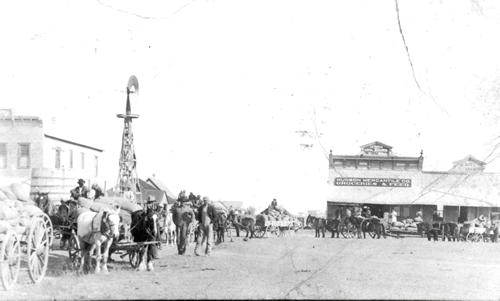
Rock Island Downtown 1918 or earlier
Photo courtesy Nesbitt Memorial Library #01392
History in a Pecan Shell
The town had been named Crasco after the nearby creek in the early 1890s but was renamed Rock Island in 1897 after the former home of a newly arrived settler. The name is said to have been the brainchild of Charles Petersen, an area landowner who became the town's first postmaster under the new name.
Dueling realtors intent on outselling each other recruited land-buyers from Illinois, Iowa and Missouri and promised a "tropical paradise" near the Gulf of Mexico. Between their recruitment trips and newspaper ads a substantial number of investors sold their northern farms to buy the cheaper Texas acreage. A good many of the new settlers felt duped when they arrived, but they stuck it out and within a few years they were making a go of it.

Hezekiah S. Lundy's Store Interior in Rock Island
Photo courtesy Nesbitt Memorial Library #01395

Hezekiah S. Lundy's Store Interior
Photo courtesy Nesbitt Memorial Library #01395
The town was prosperous enough to have its first bank robbery in 1902 when robbers blew the door off the safe of Mr. Lundy's bank. Lundy, who had his finger in many pies - including the store above - sold the bank to the "new" Rock Island Bank in 1908.
The influx of northerners (and their out-of-state money) helped Rock Island prosper and gave it the nickname "The Northern City on the Gulf Coast." Sixteen northern families moved here by 1904 and together with a few local residents they made up a population of 367. The Hallettsville Herald saw fit to mention the town's prosperity in one of their issues.
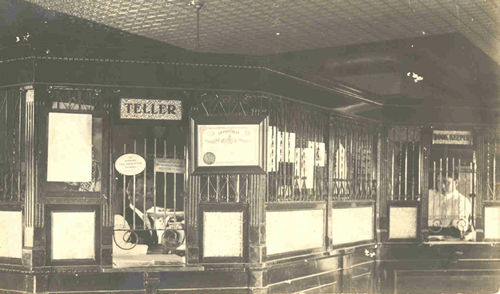
Bank Interior
Photo courtesy Nesbitt Memorial Library #01760
Crops
Rice production was just getting started and 160 acres were sold to Japanese investors.
Besides the somewhat exotic figs, more familiar crops of potatoes and cabbage were planted and Rock Island had between 150-200 acres of land devoted exclusively to strawberries. This agricultural success had two effects - first, it brought in new settlers and secondly, it raised land prices. In 1906 one 160-acre farm was sold for the then unheard-of price of $37 an acre. A creamery opened that same year and was soon producing 300-400 pounds of butter per day.
One Mr. Sherman was hired by partners Frazee and Green to make candied figs, marmalade and fig mincemeat around 1915 and in 1917 plans were made for a 10,000 bushel potato curing house.

Dr. Bell's 70 Acre Cabbage Farm Raised by J. G. Adams
Photo courtesy Nesbitt Memorial Library #01394

Dr. Bell's 70 Acre Cabbage Farm Raised by J. G. Adams
Photo courtesy Nesbitt Memorial Library #01393
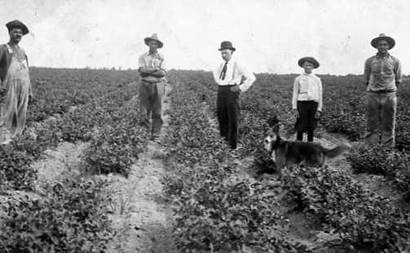
The Peanut Patch of Frank Vachon
1911 postcard courtesy Betty L Case

Portrait of J. Hashimoto and Ben Fields, Colorado County rice farmers c.1905.
Photo courtesy Nesbitt Memorial Library #01396
These were Rock Island's golden years and the prosperity lasted up until the U.S. entrance into World War I. After the war, mechanized farming methods and larger single-crop (rice) operations caused the population to move away. With the decreased population the stores lost their customer base and started closing.
Rock Island reached a high-water mark in 1925 with a population of 500.
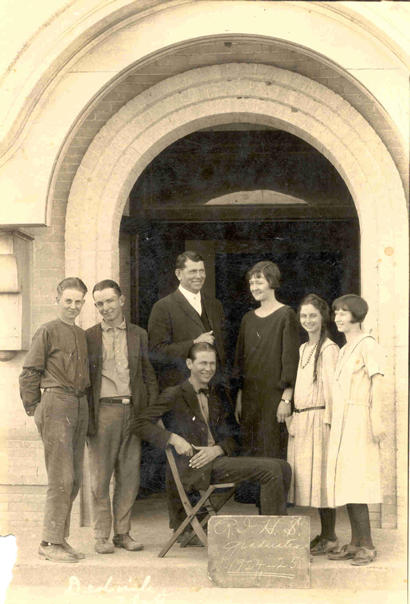
Rock Island High School Graduates Class of 1925.
Photo courtesy Nesbitt Memorial Library #00704
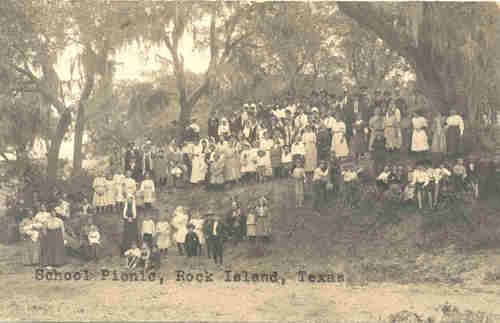
Rock Island School Picnic
Photo courtesy Nesbitt Memorial Library #01408
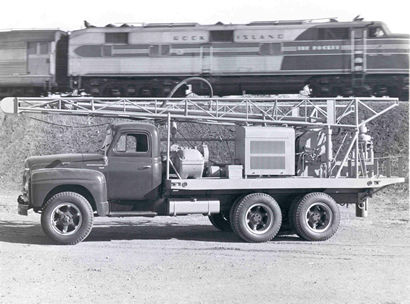
A Rock Island locomotive (no relation to the town) hurtles across Colorado County (near Columbus) in the 1950s.
Photo courtesy Nesbitt Memorial Library #
| In the 1960s Rock Island suffered several fires that left large gaps in the former downtown. At first glance Rock Island doesn't look all that different from neighboring Sheridan, Texas, but Rock Island has been designated a ghost town and is included in _T. Lindsay Baker's More Ghost Towns of Texas._By the mid-1980s the population of Rock Island had declined to 160 - the same estimate used on the 2004 highway map. The town's only cemetery is the Myrtle Cemetery which sits just south of town on FM 1693. | | | ------------------------------------------------------------------------------------------------------------------------------------------------------------------------------------------------------------------------------------------------------------------------------------------------------------------------------------------------------------------------------------------------------------------------------------------------------------------------------------------------------------------------------------------------------ | |
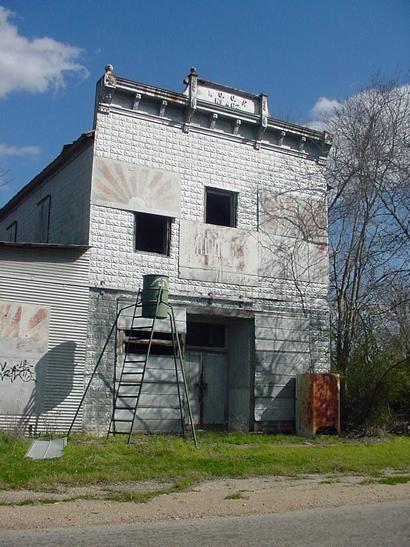
Former Odd Fellows Building
Photo by John Troesser, February 2006
More Texas Lodges
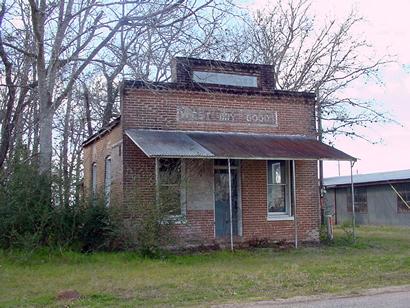
"West Dry Good"
Photo by John Troesser, February 2006
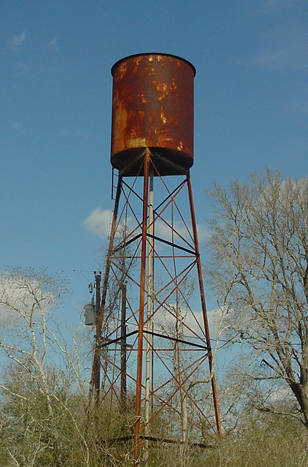
The old water tower
TE photo, February 2006
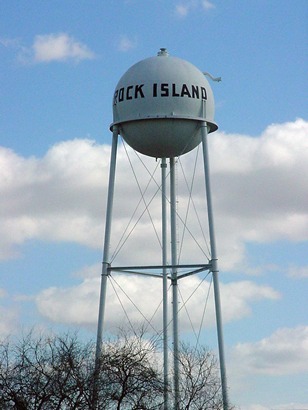
The new Rock Island water tower
Photo by John Troesser, February 2006
More Texas Water Towers
� John Troesser
June 14, 2006
Sources:
Colorado County Chronicles, Volume One,
The Colorado County Historical Commission,
The Handbook of Texas Online,
The Nesbitt Memorial Library Photo Collection
Texas Escapes, in its purpose to preserve historic, endangered and vanishing Texas, asks that anyone wishing to share their local history, stories, landmarks and recent or vintage photos, please contact us.
